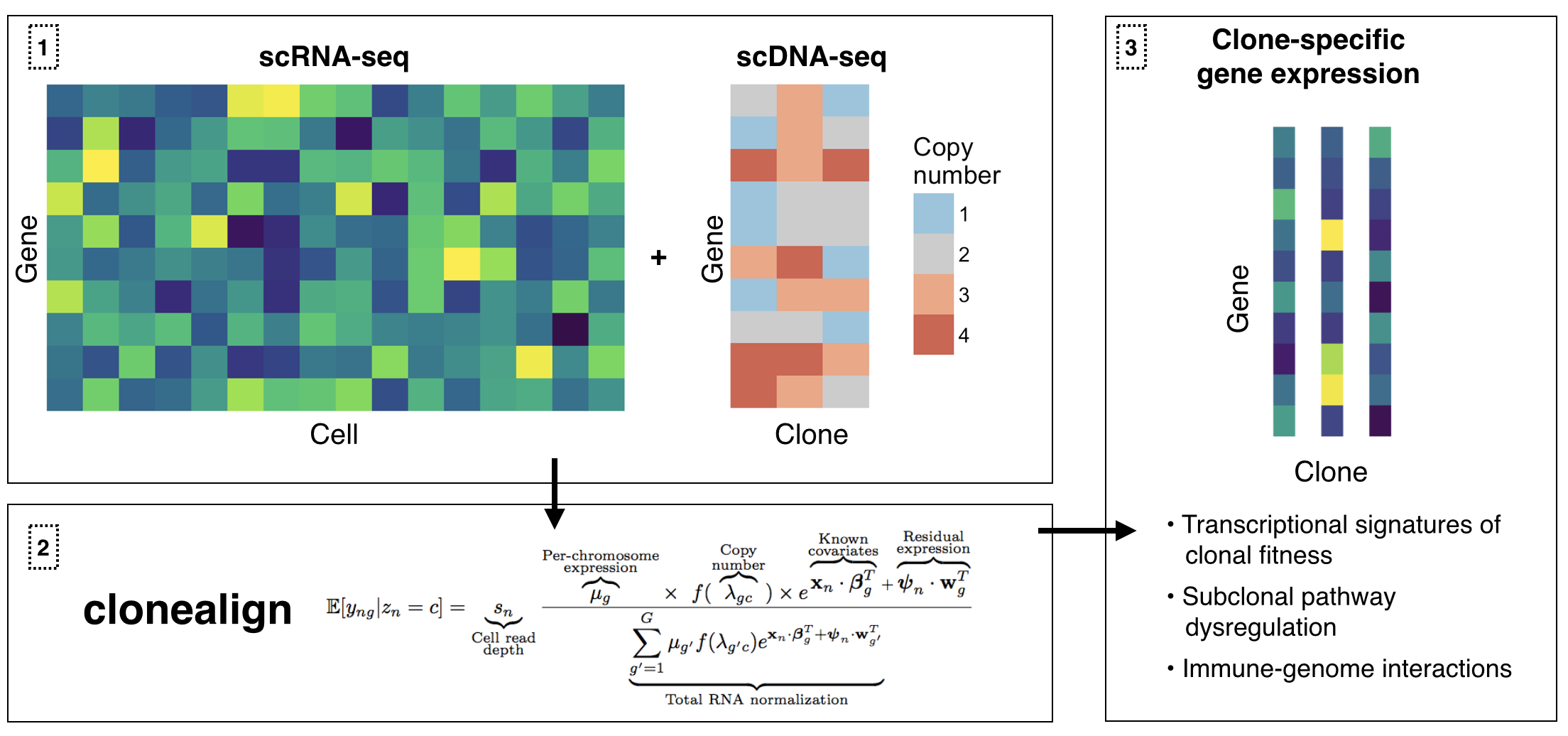clonealign
clonealign assigns single-cell RNA-seq expression to cancer clones by probabilistically mapping RNA-seq to clone-specific copy number profiles using reparametrization gradient variational inference. This is particularly useful when clones have been inferred using ultra-shallow single-cell DNA-seq meaning SNV analysis is not possible.

Version 2.0
Clonealign version 2.0 comes with several updated modelling features. In particular:
- A multinomial likelihood that vastly increases runtime and removes the need for custom size factors
- Multiple restarts through the
run_clonealignfunction, where the final fit is chosen as that which maximizes the ELBO
For more info see the NEWS.md file.
Getting started
Vignettes
- Introduction to clonealign Overview of
clonealignincluding data preparation, model fitting, plotting results, and advanced inference control - Preparing copy number data for input to clonealign Instructions for taking region/range specific copy number profiles and converting them to gene and clone specific copy numbers for input to clonealign
Installation
clonealign is built using Google's Tensorflow so requires installation of the R package tensorflow. The versioning of Tensorflow and Tensorflow probability currently breaks the standard installation, so the following steps must be taken:
install.packages("tensorflow")
tensorflow::install_tensorflow(extra_packages ="tensorflow-probability", version="2.1.0")
install.packages("devtools") # If not already installed
install_github("kieranrcampbell/clonealign")Usage
clonealign accepts either a cell-by-gene matrix of raw counts or a SingleCellExperiment with a counts assay as gene expression input. It also requires a gene-by-clone matrix or data.frame corresponding to the copy number of each gene in each clone. The cells are then assigned to their clones by calling
cal <- clonealign(gene_expression_data, # matrix or SingleCellExperiment
copy_number_data) # matrix or data.frame
print(cal)A clonealign_fit for 200 cells, 100 genes, and 3 clones
To access clone assignments, call x$clone
To access ML parameter estimates, call x$ml_paramsprint(head(cal$clone))[1] "B" "C" "C" "B" "C" "B"Paper
Authors
Kieran R Campbell, University of British Columbia